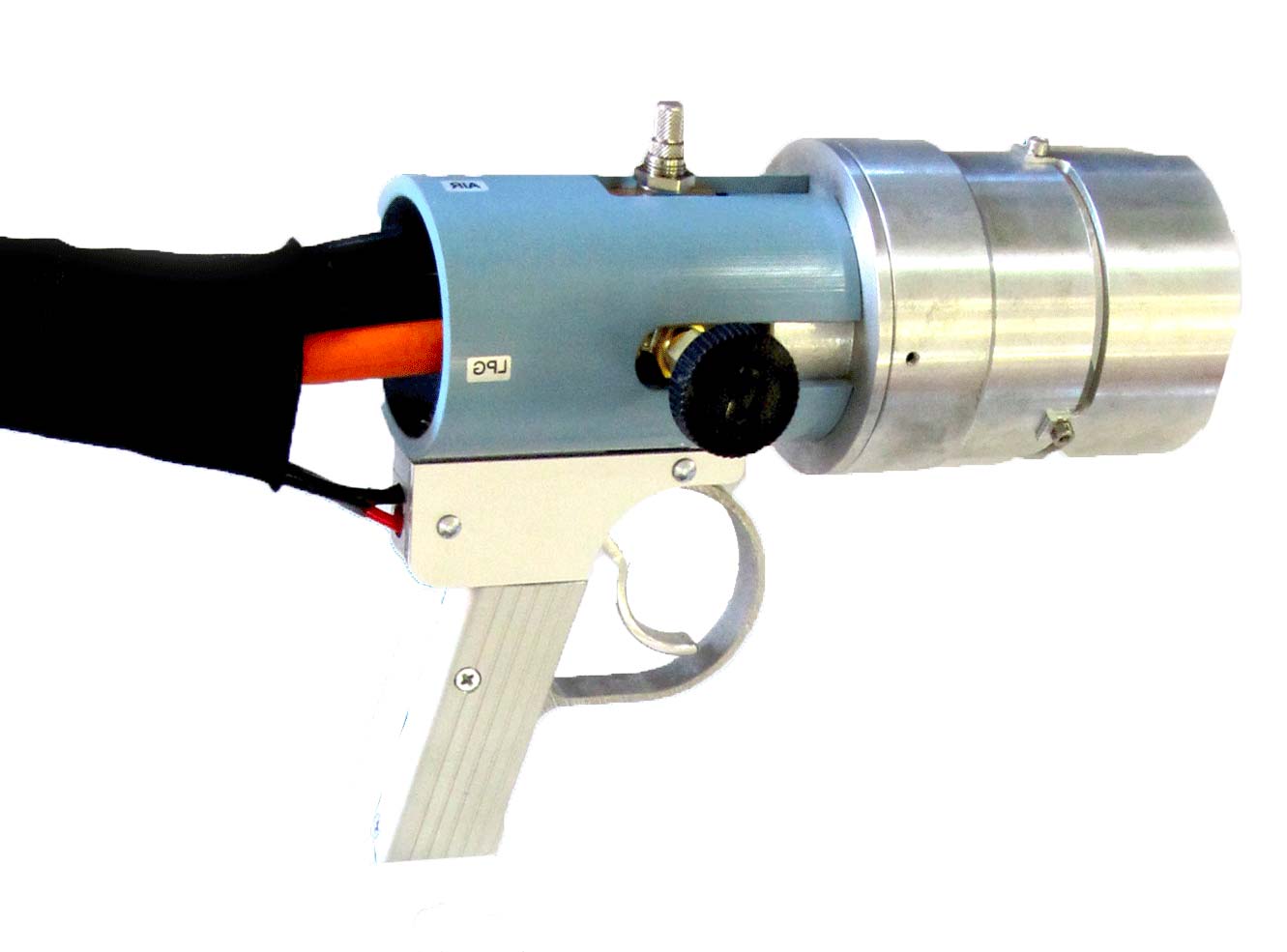
The Perfect Flame Spray Coating System for Pipe Contractors
It delivers high performance and versatility in a compact system. The first technological advance in the pipe joint PP&PE coating industry in years.
Main Features of Spartacus Flame Spray equipment
- Compact, portable and light-weight;
- Easy to use, reliable and robust, minimal maintenance requirements;
- Very high powder flow feeding system;
- Large wheels for easier transport on rough terrain;
- Quick connect, colour coded hoses to machine;
- Powder volume controls on the machine (a guideline to recommended settings is available upon request);
- Suitable to apply a fully melted PP10 coating layer 2 to 12 mm and more in one operation.
- Minimum AIR requirement: 1100 l per minute (40 cfm) ;
- dry cool air; 6 bar constant; LPG - minimum propane content: 50%-60%; minimum pressure: 3 bars constant.
Field-applied Flame Sprayed PP & PE coatings using selected powder grades (e.g. IBIX Polypropylene PP10) are virtually the same as the factory-applied protective layers on the pipe. This ensures that when these coatings are applied they will form a perfect homogeneous bond with the parent coatings, i.e. the factory-applied PP layers. The result is a fully melted coating fused with the existing polyolefin on the pipe body forming a homogeneous coating that will provide unsurpassed, cost-effective protection of your field joints. In addition, factory applied Spartacus flame sprayed coatings lead to a faster process and the system is also ideal for 3LPP (3 Layer Polypropylene), 3LPE (3 Layer Polyethylene), coating of bends, buckle arrestors and custom fittings.
Spartacus Application Guns
Various gun sizes are available to suit different pipe sizes, all easily interchangeable (quick connect fittings to the machine)
New “Centurion” Gun, the most powerful gun of its time for wider spray pattern
(available
on the large Spartacus guns and medium guns).

Benefits
- Wider spray pattern (over 10 cm with the Large Centurion Gun);
- High volume in elliptical pattern;
- Faster spraying and more uniform layers (bigger powder flow spread over a much larger area);
- Easier overlapping of passes and better powder flowing out;
- No stripes or powder build-ups on restricted areas which could result into entrapped air;
- Perfect melting of the powder coat even at high powder feeding rates.












